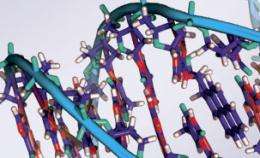A breakthrough in pinpointing protective mechanisms in Multiple Sclerosis

In an article published in the prestigious journal Science, a team of researchers led by Dr Alexander Prat and postgraduate fellow Jorge Alvarez at the University of Montreal Hospital Research Centre (CRCHUM) sheds light on how the blood-brain-barrier (BBB) works to prevent the incursion of the immune system into the brain. “Our findings provide a better understanding of the mechanisms used by the brain in mounting a natural defence against immune system aggression, as is the case in Multiple Sclerosis” explains Dr Prat.
There is no known cure for this auto-immune disease of the central nervous system (CNS). One of the characteristics of this debilitating disease is the inability of the BBB to restrict and control the passage of immune cells into the brain. This intrusion of the body's immune system into the brain affects the ability of neurons in the brain and in the spinal cord to communicate efficiently with one another, producing extensive and recurrent central nervous system damage. As such, Multiple Sclerosis (MS) symptoms can include paralysis, pricking or numbness, visual problems, repetitive difficulties with coordination and balance and in moving, which lead to chronic clinical handicap in MS patients.
The BBB is a physical and metabolic barrier that prevents unwanted cells or molecules from entering the CNS. It is composed of, among other things, tightly bound endothelial cells (cells that line the interior surface of blood cells) and perivascular astrocytes (star-shaped cells that regulate the transmission of electrical signals in the brain) that maintain CNS balance. Prat and Alvarez show that these astrocytes also play a key role in secreting Sonic hedgehog, a protein that is involved in how the brain is organized, and that endothelial cells express Hedgehog receptors, which together promote proper BBB formation and integrity during embryonic development and adulthood.
More importantly, they show, in a laboratory setting with animal and human brain cells, that the so-called Hedgehog pathway plays an important role in decreasing the adhesion and migration of immune cells into the brain. These findings demonstrate that the Hedgehog pathway provides a barrier-promoting effect and an endogenous anti-inflammatory balance to CNS-directed immune attacks. Its dysregulation is one of the pathological hallmarks of Multiple Sclerosis.
“The results of this research open the door to designing therapeutic approaches to control immune cell migration to the CNS and thus improve their delivery to affected areas,” notes Dr Prat.
With more than 75,000 MS patients, Canada has the highest incidence of multiple sclerosis in the world.















